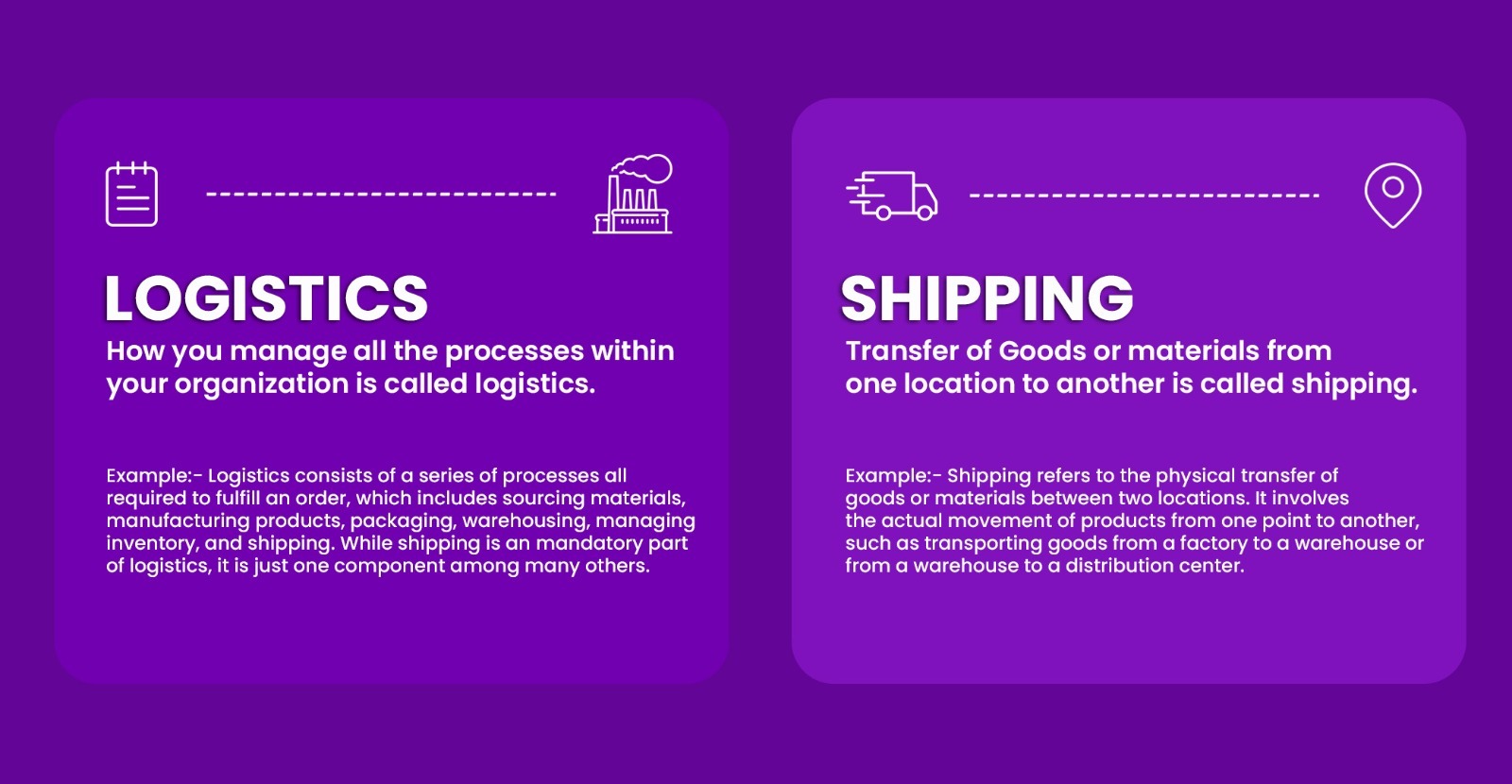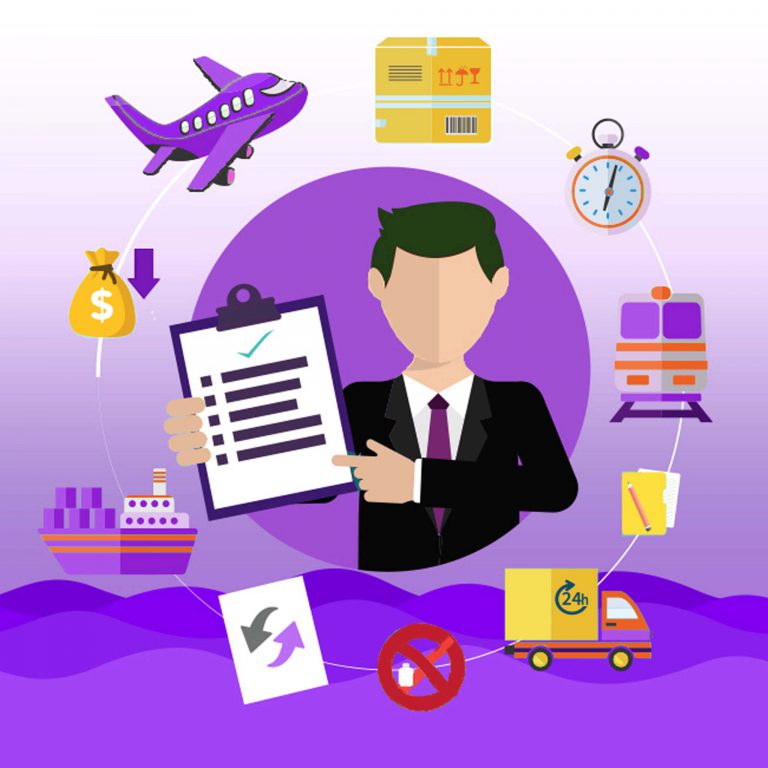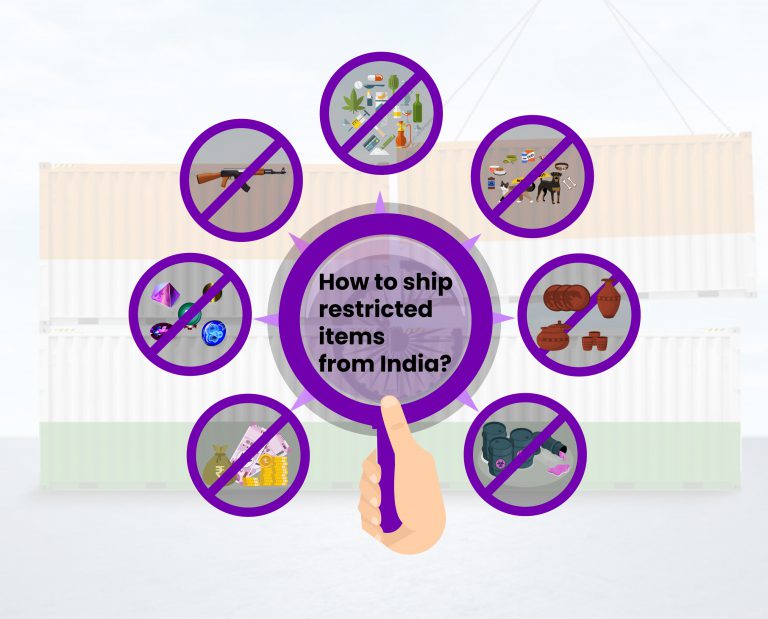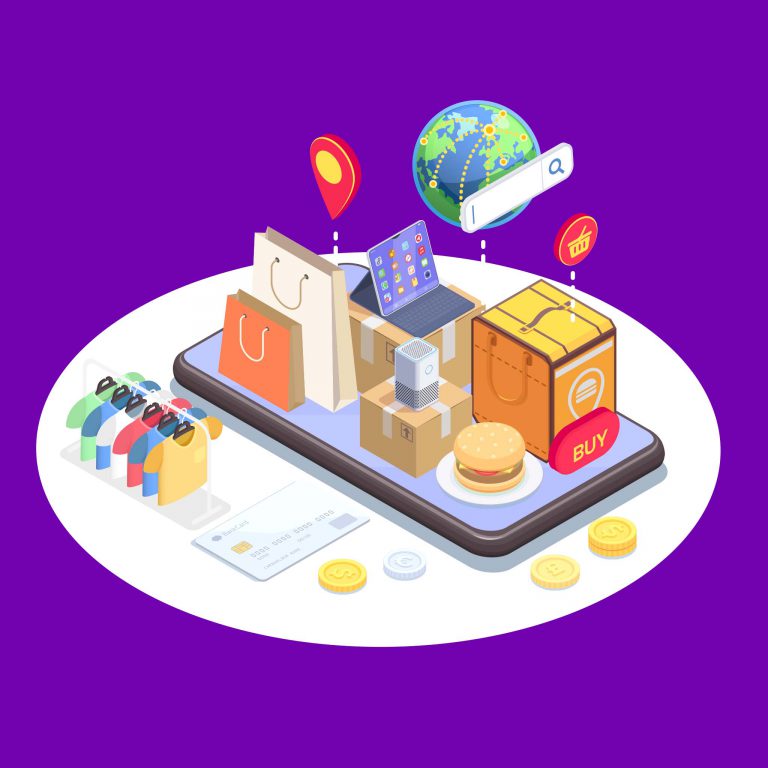Difference Between Logistics And Shipping
Introduction
In today’s interconnected world, the smooth and efficient movement of goods is crucial for businesses across various industries. However, the terms “logistics” and “shipping” are often used interchangeably, leading to confusion about their exact meanings. In this blog post, we will unravel the difference between logistics and shipping, shedding light on their unique roles in the supply chain.
Following are some basic overview about the difference between logistics and shipping
How you manage all the processes within your organization is called logistics.
Example:- Logistics consists of a series of processes all required to fulfill an order, which includes sourcing materials, manufacturing products, packaging, warehousing, managing inventory, and shipping. While shipping is a mandatory part of logistics, it is just one component among many others.
Transfer of Goods or materials from one location to another is called shipping.
Example:- Shipping refers to the physical transfer of goods or materials between two locations. It involves the actual movement of products from one point to another, such as transporting goods from a factory to a warehouse or from a warehouse to a distribution center.
I hope you have come to know about the difference between logistics and shipping from the overview itself. Because I have tried to explain in very simple language.
What is Logistics?
Logistics encompasses a broad spectrum of activities involved in the management, planning, and coordination of resources required to move goods from their point of origin to the final destination. It involves a comprehensive approach that optimizes the flow of goods, information, and finances to ensure timely delivery and customer satisfaction.
Key Components of Logistics
1) Inventory Management: Efficient logistics relies on accurate inventory management, including forecasting demand, stock control, and replenishment strategies. This ensures that products are available when and where they are needed.
2) Warehousing: Warehouses are integral to logistics, serving as hubs for storing and managing inventory. They facilitate the consolidation, sorting, and distribution of goods, allowing for streamlined operations and reduced costs.
3) Transportation: Logistics includes selecting the most suitable transportation modes (e.g., trucks, ships, airplanes) and carriers to move goods efficiently. It involves optimizing routes, managing schedules, and coordinating multiple transportation providers.
4) Order Processing: Logistics also encompasses order processing activities, such as order verification, picking, packing, and shipping. This ensures accurate and timely fulfillment of customer orders.
5) Information Flow: Effective logistics relies on robust information systems that provide real-time visibility into inventory levels, order status, and transportation updates. This enables better decision-making and proactive problem-solving.
What is Shipping?
Shipping, on the other hand, is a subset of logistics that specifically refers to the physical movement of goods from one location to another. It focuses on the operational aspects of transportation, including the loading, unloading, and transportation of cargo using various modes, such as ships, trucks, trains, or airplanes.
Key Components of Shipping
1) Mode Selection: Shipping involves choosing the appropriate transportation mode based on factors like distance, cost, type of goods, and urgency. Different modes offer distinct advantages and limitations, requiring careful consideration to meet specific shipping requirements.
2) Carrier Negotiation: Shipping requires negotiating contracts and rates with carriers, including freight forwarders, shipping lines, trucking companies, or air cargo providers. This ensures the most cost-effective and reliable transportation services.
3) Documentation and Customs Compliance: Shipping necessitates preparing and managing shipping documents, such as bills of lading, customs declarations, and export/import permits. Compliance with international trade regulations is crucial to avoid delays or penalties.
4) Tracking and Tracing: Shipping involves monitoring the movement of goods throughout the transportation process. Tracking technologies and systems allow stakeholders to track shipments, ensuring transparency, security, and timely updates.
Understanding the Relationship
While logistics and shipping are distinct concepts, they are closely intertwined in the overall supply chain management process. Logistics provides the overarching framework for planning and executing the movement of goods, encompassing a broader set of activities. Shipping, on the other hand, focuses specifically on the physical transportation of goods and is a crucial component within the logistics framework.
Conclusion
In summary, logistics and shipping are integral parts of the supply chain, each serving a unique purpose. Logistics encompasses a wide range of activities that optimize the flow of goods, information, and finances, while shipping specifically addresses the physical movement of goods.
Understanding the differences between these terms enables businesses to effectively manage their supply chains, ensuring seamless operations, customer satisfaction, and sustainable growth. By leveraging the power of logistics and shipping in tandem, organizations can unlock new opportunities and achieve competitive advantages in today’s dynamic business landscape.








3 Comments